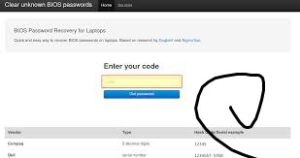
BIOS flashing is a procedure that is required in cases when other ones are not successful. Flashing entails erasing the BIOS chip with an updated or unlocked version of the firmware.
Two major approaches are possible:
- OEM flash tools (e.g., Dell BIOS Update Tool, HP BIOS Configuration Utility)
- Hardware programming of SPI flash with hardware programmer such as the CH341A USB programmer
The more invasive, but allowing full access, is flashing with custom ROMs or unlocked vendor BIOS dumps.
This is the most often talked about method in BIOS modification forums such as LinusTechTips and must be followed strongly based on device compatibility.
Mod Tools Firmware Upgrades
More experienced users can use Coreboot, modded UEFI BIOS and Flasher utilities to
provide an open-source replacement or highly-modified firmware images. Coreboot is an alternative to
replace the closed-source BIOS with a slim bootloader that is auditable, suitable in notebooks with a focus on privacy or academic purposes.
Because unlocking the BIOS through these tools can enable features otherwise absent in OEM versions
(e.g. S3 sleep state control, advanced memory timings or even custom boot logos)
this practice is sometimes referred to as tripping BIOS. These solutions are however most suitable to users who are not scared of hardware level debugging and serial console access.
Real World Use Cases & Examples
The process of unlocking a BIOS is not a mere theoretical concept, but a practically applicable feature employed by IT professionals, system builders and repair technicians as well as performance enthusiasts. Whether it is enhancing the hardware performance, to fleet management in enterprises, to rescuing locked out systems, BIOS unlocking offers more control, flexibility, and usefulness in many fields. How about taking a look at how BIOS unlocking works in practice?
Case: Overclocking Performance Tuning
When it comes to high-performance computing and competitive gaming, optimization of the systems is everything. BIOS unlocking allows enthusiasts and professional gamers access overclocking options which would otherwise be unavailable or locked out by OEMs. This features manual adjustment of CPU multipliers, base clock (BCLK), DRAM voltages and power phase settings.
As an example, overclockers can be unlocked Advanced > CPU Configuration tab to allow superior turbo boost, turn off thermal throttling, or set voltage offsets. Its settings can easily bring the processors far beyond the factory clock speeds and get the best out of them in resource-hungry tasks like 3D rendering, simulations, and current AAA gaming.
The ability to unlock the BIOS also unlocks custom fan curves and power states, as well as hardware monitoring thresholds, and as such, it is less challenging to find a compromise between thermals and performance. Techniques like this will be featured in communities like LinusTechTips, especially on platforms like ASUS ROG, MSI and Dell XPS systems where BIOSes are locked, reducing hardware potential.
